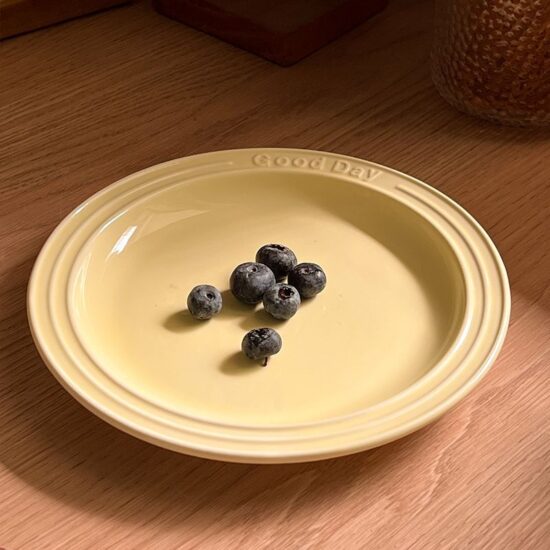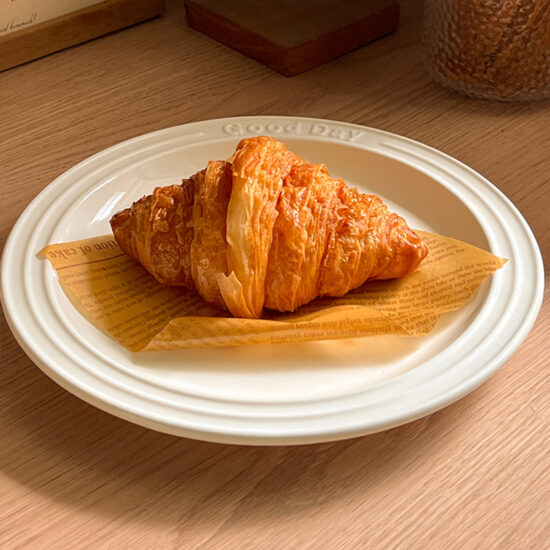bob@nbdho.com
Ceramic Plates Around the World: Cultural Styles and Unique Design Traditions
Cultural and Stylistic Differences in Ceramic Plates Around the World
Introduction
Ceramic plates are more than just tableware—they reflect cultural identity, history, and artistry. Across the world, different regions have developed their own distinct ceramic traditions, resulting in plates that vary in shape, color, pattern, and meaning. This article explores how cultures across Asia, Europe, the Middle East, and Africa express themselves through ceramic plate design and production.
1. China: Symbolism and Imperial Heritage
China is one of the birthplaces of ceramics, with a legacy dating back thousands of years. Chinese ceramic plates are famous for:
-
Porcelain clarity and delicacy
-
Blue and white underglaze painting (Qinghua 青花)
-
Motifs like dragons, phoenixes, plum blossoms, and calligraphy
-
Designs often carry meanings of prosperity, harmony, and longevity
Chinese ceramics are highly prized globally and continue to influence modern tableware aesthetics.
2. Japan: Minimalism and Natural Beauty
Japanese ceramic plates embody wabi-sabi—a philosophy of embracing imperfection and natural form.
-
Common styles: Shino, Oribe, and Raku
-
Often asymmetrical, hand-thrown, and with earth-toned glazes
-
Plates may vary by season or dish type, reflecting the importance of presentation in Japanese cuisine
-
Function and ritual (especially in tea ceremonies) are integral
Japanese ceramic art celebrates simplicity, craftsmanship, and deep cultural meaning.
3. Morocco: Bold Colors and Geometric Art
Moroccan ceramics are known for their vivid patterns, intricate Arabesque and geometric motifs, and hand-painted vibrancy.
-
Traditional colors: cobalt blue, green, yellow, and red
-
Handmade using local clay and zellige (tile-like) influence
-
Often used for decorative purposes as well as serving
These plates often reflect Islamic artistic traditions and are highly recognizable for their striking aesthetics.
4. Italy: Renaissance Art and Majolica Ceramics
Italy’s ceramic plates, especially from Tuscany and Deruta, reflect rich Renaissance traditions.
-
Known for Majolica: tin-glazed ceramics with detailed painting
-
Themes include mythological scenes, florals, and coats of arms
-
Glazed with bright colors and smooth, glossy finishes
Italian ceramics balance art and function, often used in festive settings or as heirlooms.
5. Mexico: Folk Art and Earthy Aesthetics
Mexican ceramic plates—especially Talavera pottery—combine Spanish influences with Indigenous traditions.
-
Brightly colored and hand-painted
-
Patterns often feature animals, flowers, and suns
-
Made from red clay and glazed with lead-free finishes
These plates reflect Mexican folk art, storytelling, and community values.
6. Scandinavia: Modern Simplicity and Functionality
Scandinavian ceramic design (e.g., from Denmark, Sweden, Finland) is influenced by modernism and practicality.
-
Neutral tones, matte finishes, and clean lines
-
Focus on function, stackability, and durability
-
Often paired with minimalist dining aesthetics
These ceramic plates suit modern homes and hospitality sectors looking for stylish utility.
7. Africa: Tribal Motifs and Organic Craftsmanship
Across Africa, ceramic plates are handcrafted using local materials and traditional methods.
-
Designs vary by region (e.g., Nigerian, Ethiopian, Moroccan)
-
Plates often include hand-carved patterns or painted tribal art
-
Used for both rituals and daily meals
African ceramics showcase the deep integration of pottery into cultural, ceremonial, and domestic life.
Conclusion
From the intricate brushwork of China to the rustic charm of Mexico, ceramic plates offer a window into the cultural soul of each region. These differences not only highlight aesthetic preferences but also inform how we use and value tableware globally.
At [Your Company Name], we specialize in custom ceramic plate manufacturing that respects and reflects global design traditions. Whether you’re sourcing traditional patterns or modern fusion styles, we offer OEM/ODM ceramic tableware solutions for global markets.

